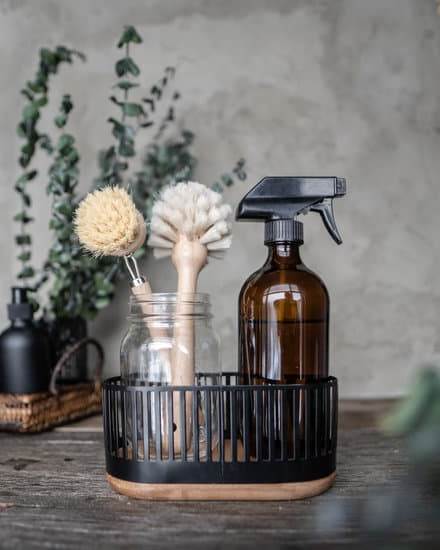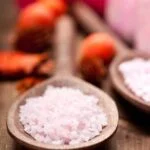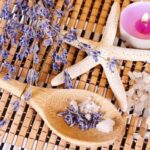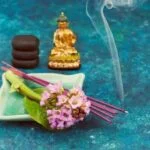Aromatherapy has been practiced for centuries to improve physical, mental, and emotional well-being. Making aromatherapy oils at home allows you to customize blends that suit your preferences and needs. This article will guide you through the process of creating your own customized aromatherapy oils, from selecting the right ingredients to storing them properly.
The use of aromatherapy oils is gaining popularity due to their various benefits, such as relaxation, stress relief, improved sleep quality, and mood enhancement. By making your own aromatherapy oils, you have the advantage of knowing exactly what goes into them, ensuring they are pure and free from any harmful additives or chemicals.
Whether you want to create a calming blend for bedtime or an energizing mix for daytime use, learning to make aromatherapy oils gives you full control over your wellness routine.
Choosing the right essential oils is crucial in creating effective aromatherapy blends. Each essential oil carries its unique benefits and properties. Understanding the characteristics of different oils will help you create balanced and harmonious blends that cater to your specific needs. With the proper tools and equipment, along with a step-by-step guide provided in this article, you can embark on a rewarding journey into the world of making your own personalized aromatherapy oils.
Benefits of Using Aromatherapy Oils
Aromatherapy oils offer a wide range of benefits beyond just their pleasant fragrance. These natural oils extracted from plants have been used for centuries for their therapeutic properties and healing effects. One of the primary benefits of using aromatherapy oils is their ability to alleviate stress and promote relaxation. Essential oils like lavender, chamomile, and bergamot have calming properties that can help reduce anxiety, improve sleep quality, and create a sense of well-being.
In addition to their emotional benefits, aromatherapy oils also have physical health advantages. Many essential oils possess antibacterial, antiviral, and anti-inflammatory properties that can support the body’s immune system and aid in fighting off infections.
Tea tree oil, eucalyptus oil, and peppermint oil are commonly used for their antimicrobial effects and ability to relieve congestion or headaches. Whether used in massage therapy, diffusers, bath soaks, or inhalation methods, these natural remedies can enhance overall wellness and promote holistic healing.
Furthermore, aromatherapy oils can also be beneficial for skincare and beauty routines. Certain essential oils like tea tree oil have purifying properties that can help with acne-prone skin or conditions such as eczema or psoriasis.
Others like rosehip seed oil or jojoba oil are rich in antioxidants and vitamins that nourish the skin and promote a healthy complexion. By incorporating homemade aromatherapy oils into your skincare regimen, you can enjoy the benefits of natural ingredients without harsh chemicals or preservatives commonly found in commercial products.
Essential Oils
There is a wide variety of essential oils available, each with its own unique aroma and properties. Some popular essential oils used in aromatherapy include lavender, eucalyptus, peppermint, tea tree, and chamomile. Before deciding on which oils to use, consider the desired effect you want to achieve. For example, if you’re looking to create a calming blend for relaxation, lavender and chamomile would be excellent choices.
It’s important to note that essential oils are highly concentrated and potent substances, so they should be used with care. Always dilute essential oils properly before applying them to the skin or using them in a diffuser. Additionally, some essential oils may not be suitable for certain individuals, such as pregnant women or those with specific medical conditions. Research each oil thoroughly before incorporating it into your aromatherapy blends.
| Essential Oil | Main Properties |
|---|---|
| Lavender | Calming, relaxing |
| Peppermint | Invigorating, refreshing |
| Eucalyptus | Cleansing, purifying |
Tools and Equipment Needed for Making Aromatherapy Oils
When it comes to making aromatherapy oils, having the right tools and equipment is essential to ensure that the process goes smoothly and safely. The first thing you’ll need is a good quality set of glass bottles or vials to store your finished oils. Glass is preferred over plastic as it won’t react with the essential oils and will help preserve their potency.
Another important tool for making aromatherapy oils is a carrier oil, such as jojoba, almond, or coconut oil. Carrier oils are used to dilute essential oils before use on the skin, as some essential oils can be irritating if applied directly. Make sure to choose a carrier oil that is suitable for your skin type and desired use.
In addition to bottles and carrier oils, you’ll need measuring spoons or droppers to accurately measure out your ingredients. A glass stirring rod or spoon can also be handy for mixing your oils together. And don’t forget about labels.
Properly labeling your homemade aromatherapy oils will not only help you keep track of what’s in each bottle but will also add a professional touch if you decide to share them with others. By investing in these tools and equipment, you’ll be well-equipped to start creating your own personalized blends of aromatherapy oils.
Step-by-Step Guide to Making Aromatherapy Oils
Gathering Ingredients
Before diving into the process of making aromatherapy oils, it is essential to gather all the necessary ingredients. This typically includes carrier oils such as jojoba, almond, or coconut oil, as well as essential oils that will provide the desired therapeutic benefits. Be sure to choose high-quality ingredients to ensure the efficacy and safety of your final product. Research different essential oils and their properties to create a blend that suits your needs and preferences.
Blending Essential Oils
Once you have selected your carrier oil and essential oils, it’s time to start blending them together. The key to making a successful aromatherapy oil is finding the right balance of essential oils. Start by adding drops of each essential oil into the carrier oil, keeping in mind the recommended dilution ratios for each oil. Use a dropper or pipette for precise measurements and mix well to ensure that the oils are evenly distributed.
Bottling and Labeling
After blending your aromatherapy oils, it’s important to transfer them into dark glass bottles to protect them from light exposure. Glass bottles help preserve the potency and shelf life of the oils. Be sure to label each bottle with the name of the blend, date of creation, and any safety precautions or usage recommendations. Store your homemade aromatherapy oils in a cool, dark place away from direct sunlight or heat sources to maintain their quality over time.
Making aromatherapy oils at home can be a rewarding and fulfilling experience, allowing you to customize blends that cater specifically to your needs. Experiment with different combinations of essential oils until you find a blend that resonates with you both physically and emotionally. By following this step-by-step guide and taking proper safety precautions, you can create high-quality homemade aromatherapy oils that enhance your overall well-being and elevate your self-care routine.
Safety Precautions and Best Practices in Aromatherapy Oil Making
When making aromatherapy oils at home, it is crucial to prioritize safety precautions and adhere to best practices. By following these guidelines, you can ensure that the process is not only effective but also safe for both yourself and those who will use the oils. Here are some key safety measures to keep in mind:
- Research: Before diving into making aromatherapy oils, it is essential to research the specific essential oils you plan to use. Some oils can be harmful if not properly diluted or used incorrectly, so understanding their properties and potential side effects is crucial.
- Dilution: Always remember to properly dilute essential oils with carrier oils before using them on your skin or in a diffuser. Not doing so can cause irritation, sensitization, or adverse reactions. The recommended dilution ratio varies depending on the oil, so be sure to follow guidelines closely.
- Patch Test: Perform a patch test before using any new blend of aromatherapy oil on a larger area of your skin. This helps determine if you may have an allergic reaction or sensitivity to the ingredients.
Best Practices
- Cleanliness: Ensure that all tools and equipment used in the process of making aromatherapy oils are clean and sterilized. This prevents contamination and maintains the purity of the final product.
- Labeling: Properly label all homemade aromatherapy oils with ingredients used, date of creation, and intended purpose. This makes it easier to track each blend’s effectiveness and expiration date.
- Storage: Store your homemade aromatherapy oils in dark-colored glass bottles away from direct sunlight and heat. This helps preserve their potency and prevents degradation over time.
By incorporating these safety precautions and best practices into your routine when making aromatherapy oils, you can enjoy all the benefits of these natural remedies while ensuring a safe experience for yourself and others who may use them. Remember, prioritizing safety is key when working with potent essential oils.
Storage and Preservation of Aromatherapy Oils
When it comes to making aromatherapy oils, proper storage and preservation are key to maintaining their potency and effectiveness. Essential oils are highly concentrated plant extracts that can easily degrade when exposed to heat, light, or air. To ensure that your homemade aromatherapy oils last as long as possible, it is important to store them properly in a cool, dark place away from direct sunlight and fluctuations in temperature.
One of the best ways to preserve aromatherapy oils is by using dark-colored glass bottles like amber or cobalt blue. These bottles help protect the oils from UV light which can cause them to break down and lose their therapeutic properties over time. Additionally, make sure the bottles are tightly sealed when not in use to prevent air exposure that can lead to oxidation.
It is also recommended to label each bottle with the name of the oil, date of creation, and any specific instructions for use. This will not only help you keep track of your inventory but also ensure that you use the oils within their recommended shelf life. Following these storage and preservation practices will ultimately extend the longevity of your homemade aromatherapy oils for optimal benefits.
| Storage Tips for Aromatherapy Oils | Preservation Techniques |
|---|---|
| Store in a cool, dark place | Use dark-colored glass bottles |
| Away from direct sunlight | Tightly seal bottles when not in use |
Creative Ways to Use Homemade Aromatherapy Oils
Aromatherapy oils are not only beneficial for their therapeutic properties but also for their versatility in various applications. Once you have mastered the art of making your own aromatherapy oils, there are countless creative ways to incorporate them into your daily life. Here are some innovative ideas on how you can use your homemade aromatherapy oils:
- Diffuser Blends: Create unique blends of essential oils to use in a diffuser to freshen up any room in your home. Whether you want to promote relaxation, uplift your mood, or enhance focus, there is a blend for every mood and occasion.
- DIY Beauty Products: Add a few drops of your favorite aromatherapy oil to your skincare routine by creating homemade beauty products such as facial serums, body scrubs, or bath salts. Not only will you benefit from the therapeutic properties of the oils, but you will also enjoy a personalized pampering experience.
- Scented Home Décor: Infuse your living space with delightful scents by incorporating aromatherapy oils into DIY projects like scented candles, room sprays, or potpourri. You can customize the scents to match the season or create signature fragrances for each room in your home.
In addition to these creative uses, homemade aromatherapy oils can also be incorporated into everyday items such as laundry detergent, cleaning solutions, or even as a natural insect repellent. The possibilities are endless when it comes to exploring the benefits and aromatic qualities of essential oils in various aspects of your life.
By making your own aromatherapy oils, you not only gain control over the ingredients used but also have the opportunity to infuse every moment with personalized scents that cater to your preferences and well-being.
Remember to always store your homemade aromatherapy oils properly in dark glass bottles away from direct sunlight and heat to preserve their potency and extend their shelf life. With a little creativity and experimentation, you can discover new ways to enjoy the benefits of aromatherapy while adding a touch of luxury and personalization to your daily routines.
Conclusion
In conclusion, making aromatherapy oils can be a rewarding and empowering experience. By creating your own blends, you have the freedom to tailor the scents to suit your preferences and needs. It is a craft that combines both art and science – from selecting the right essential oils to understanding how they work together harmoniously. The process of making aromatherapy oils allows for personalization and experimentation, ultimately resulting in unique and personalized products.
Furthermore, the benefits of using aromatherapy oils go beyond just their pleasant scents. These natural remedies can aid in relaxation, stress relief, improved sleep quality, and even boost mental clarity. By incorporating homemade aromatherapy oils into your daily routine, you can promote overall well-being and enhance your mood and environment.
As you embark on this journey of creating your own aromatherapy oils, remember to prioritize safety precautions and follow best practices throughout the entire process. Proper storage and preservation techniques are essential in maintaining the quality and potency of your blends. With dedication, creativity, and knowledge, you can harness the power of nature’s gifts to make aromatic treasures that bring joy and balance into your life.
Frequently Asked Questions
How Do I Make Aromatherapy Oils?
Making aromatherapy oils involves blending essential oils with a carrier oil to dilute them for safe use on the skin. You can experiment with different combinations of oils based on your desired benefits or scents. It’s important to research the properties and safety precautions for each essential oil before creating your blend.
How Do You Make Essential Oils From Scratch?
To make essential oils from scratch, you will need a distillation process using steam or water to extract the aromatic compounds from plant material. This can be done at home with equipment like a still or distiller.
It’s important to properly research the plant material you are using and follow safety guidelines during the distillation process to ensure quality and purity of the essential oil.
What Is the Best Carrier Oil for Essential Oils?
The best carrier oil for essential oils depends on personal preference and skin type, but popular choices include jojoba oil, coconut oil, sweet almond oil, and grapeseed oil. These carrier oils are often chosen for their light texture, absorbency, and compatibility with various essential oils.
Experimenting with different carrier oils can help you find the best one for your specific needs and preferences.

Are you looking for a natural way to improve your health and wellbeing?
If so, aromatherapy may be the answer for you.





